Numerous times, we are required to use multiple operating systems on a single computer. One of the best ways to do the same is by creating a virtual machine on top of your host operating system. In this post, we will see how to install macOS in VMWare Workstation.
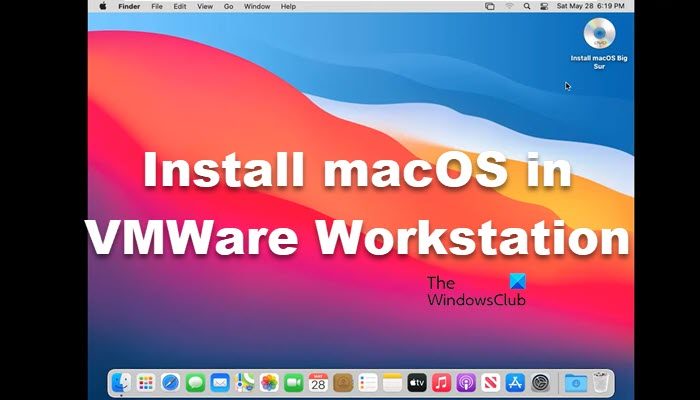
Install macOS in VMWare Workstation
If you want to install macOS in VMWare Workstation, follow the steps mentioned below.
- Install VMWare Workstation
- Download macOS
- Get Unlocker
- Create a new virtual machine
- Install macOS on your virtual machine
Let us talk about them in detail.
1] Install VMWare Workstation
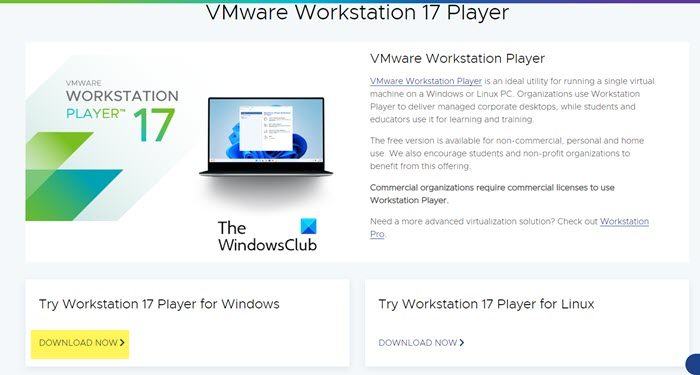
First of all, we need to install the VMWare Workstation application on your computer. You can do that by going with the free version of VMWare Workstation from vmware.com. Go to the mentioned link and click on the Download Now button placed below Try Workstation 17 Player for Windows. Once it is downloaded, go to the Download folder, run the installer, and follow the on-screen instructions to install the application on your computer.
2] Download macOS
To install macOS, you need to download the macOS Big Sur file from the Apple Store. Given its large size, make sure you have a stable internet connection, sufficient storage space, and patience during the download process. Remember, it’s not advisable to download the file from unauthorized sources.
3] Get Unlocker
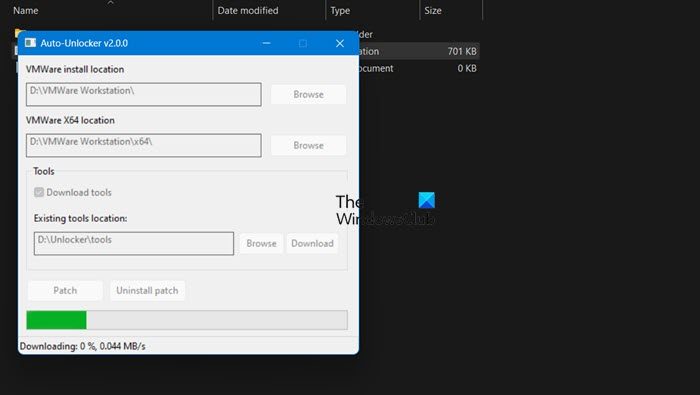
VMware Workstation Pro does not support the installation of macOS by default. You need to install Auto-Unlocker to enable it. For that, go to github.com, scroll down, and download the Unlocker-v2.0.1-x64.zip file. Once downloaded, extract the ZIP file and go to the extracted folder. Run the executable file as an admin and once it’s open, click on Patch. Let it run, once patching is completed, you will get a message stating “The patch has been installed successfully”.
4] Create a new virtual machine
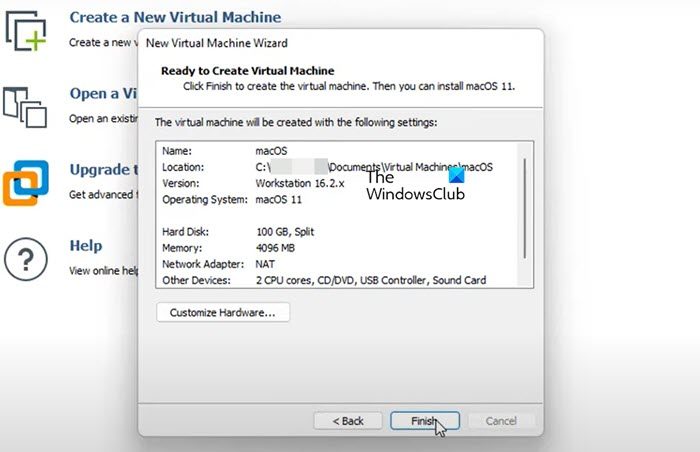
Now that we have everything we need to create a macOS virtual machine, let us go ahead and start creating. We have provided a step-by-step guide to do the same below.
- Open VMWare Workstation.
- Click on Create a New Virtual Machine.
- Select the Installer disk image file (ISO), click on Browse, navigate to the path where you have kept the macOS ISO file, select it, and then click on Next.
- In the Guest operating system section, select Apple Mac OS X, and in Version, select the correct version. Click Next.
- Give the newly created virtual machine an appropriate name and the location where you want to install it.
- Then, click on Next.
- Allocate at least 100 GB for your VM and click on Next.
- Finally, click on Finish.
This way, we have created an environment on top of which we are going to install our operating system. If you want to make some other changes such as memory or storage, just select the virtual machine, click on Edit virtual machine settings, and then make the required changes. It is recommended to give 8GB of RAM and set up at least 2 cores.
5] Install macOS on your virtual machine
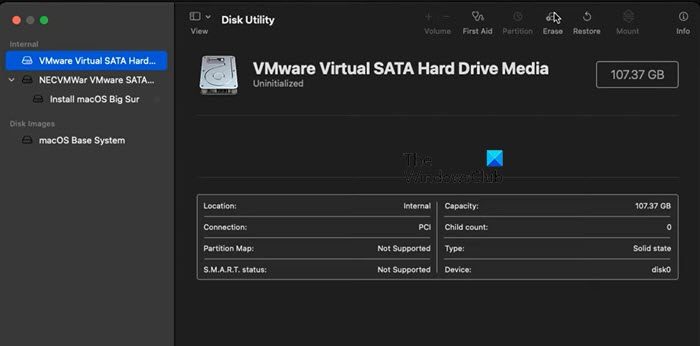
Finally, let us start installing macOS on your virtual machine. Follow the steps mentioned below to do the same.
- Start up the virtual machine and then proceed with the installation of macOS.
- You will be asked to select a preferred language, click on Next, and then go to Disk Utility.
- There, you need to select the hard drive and erase it.
- After clearing the hard drive, go to Disk Utility > Quick Disk Utility.
- Now, click on Install macOS Big Sur and click on Continue.
- You will be asked to create an admin account during the process, just enter the credentials when asked and you will be good to go.
- Finally, follow the on-screen instructions to complete the installation process.
Voila! You have successfully installed macOS in VMWare Workstation with ease.
Read: Install Windows on Mac using Boot Camp Assistant)?
How to install a macOS in VMware Workstation?
By default, macOS is not supported in VMWare Workstation. So, we need to download and install Unlocker as it patches VMWare Workstation and allows us to install macOS in VMWare. Once done, create an environment to install the operating system and then install macOS. You can check out the guide mentioned earlier to do the same.
Read: Best free Mac emulators for Windows
Can I install macOS on VM?
Yes, you can in fact install macOS on virtual machines be it VirtualBox or VMWare hosted on a Windows or Linux machine. You can check out the guide on how to install macOS in VirtualBox on Windows 11 or the aforementioned guide if you want to install the OS on VMWare Workstation.
Leave a Reply